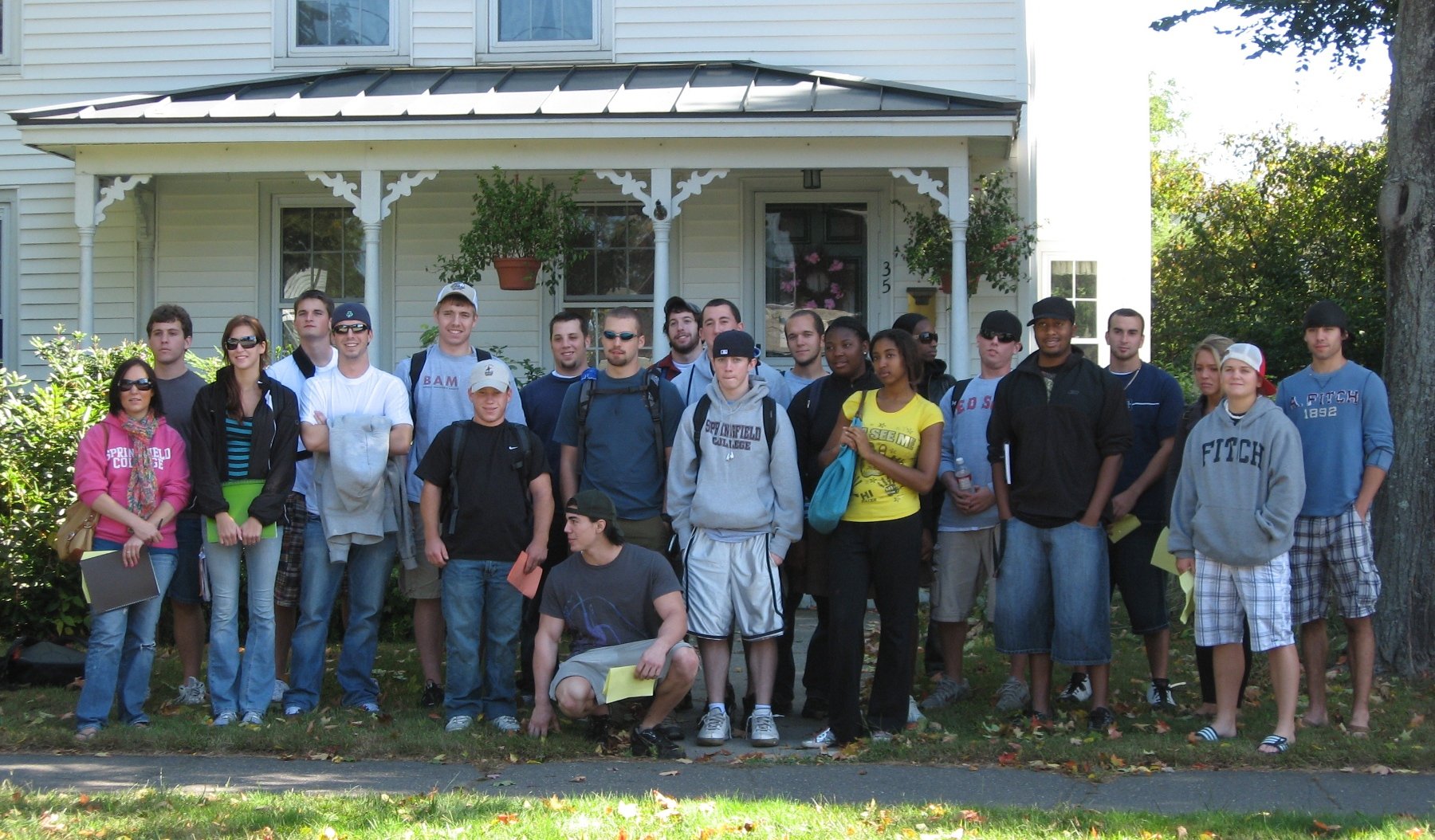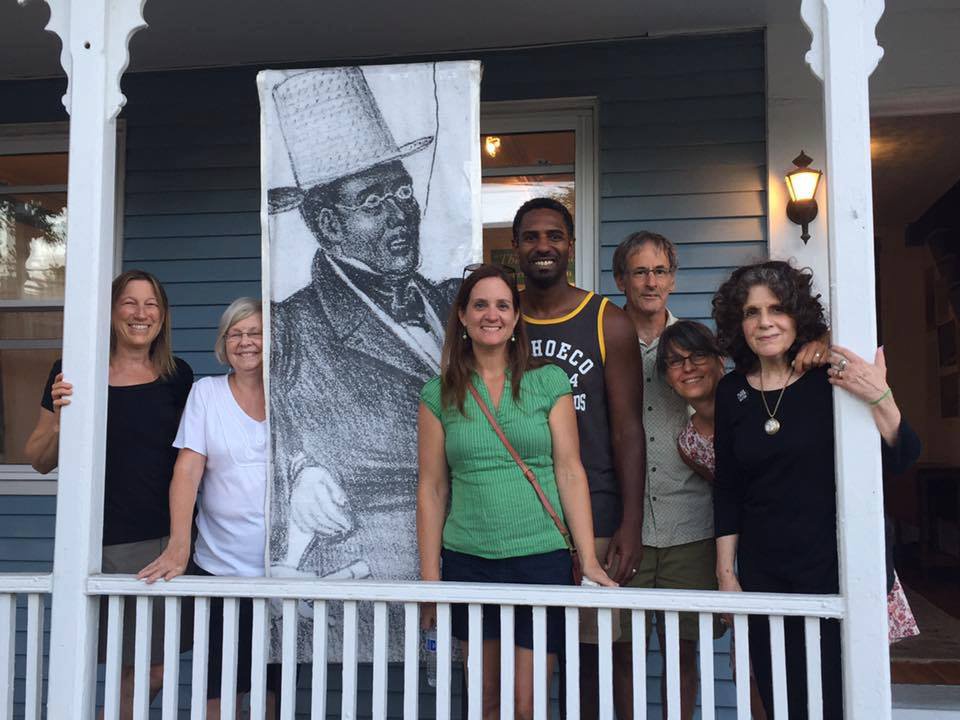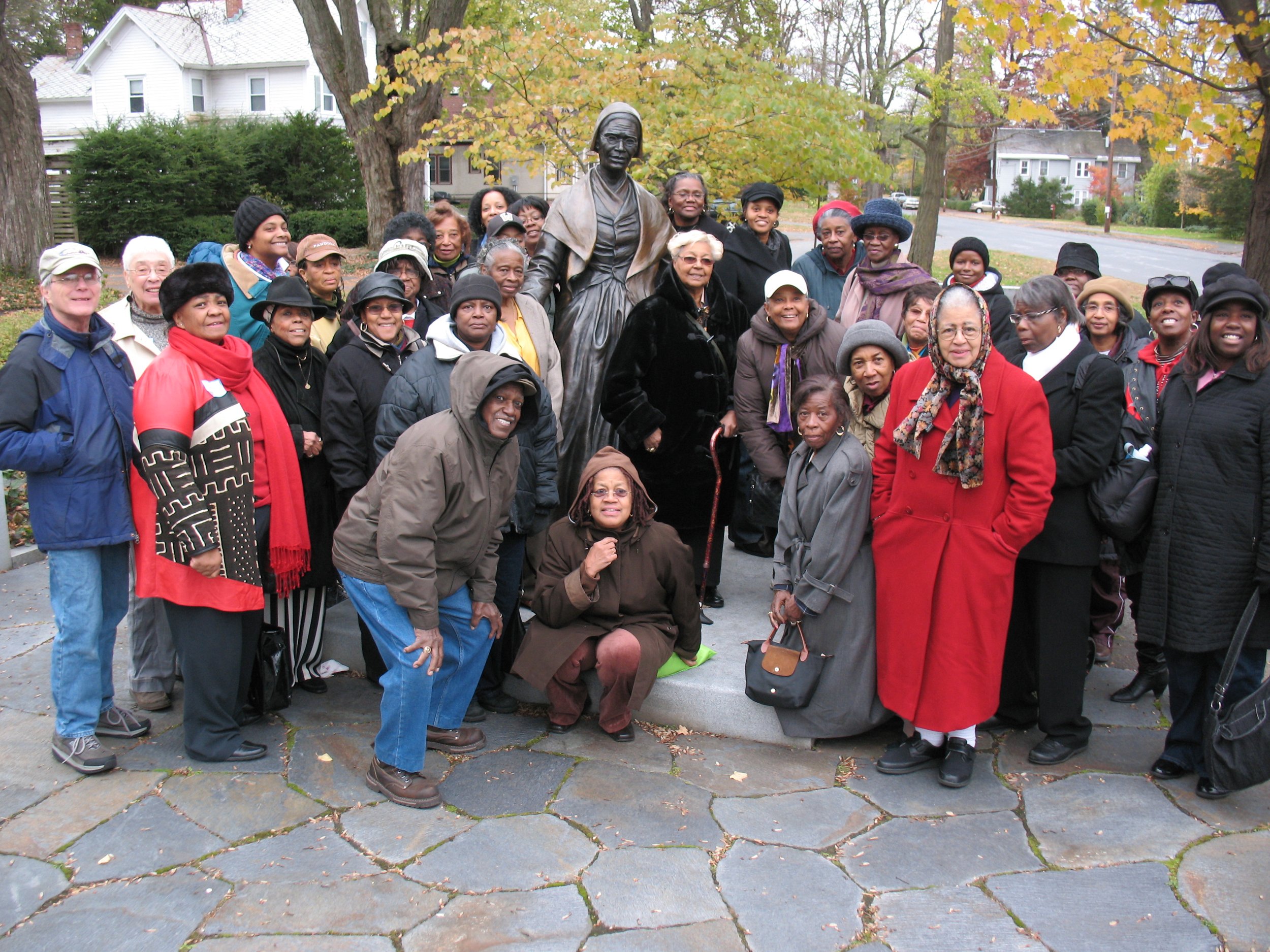The David Ruggles Center: Preserving Florence’s abolitionist history
Written by Charles Noyes
Images Courtesy of Periodyssey.com and the David Ruggles Center
Sponsored by Valley Home Improvement
Published in Northampton Living (February 2022)
For many who’ve grown up or spent time in Florence, Massachusetts, the discovery that the town was once home to a radical utopian abolitionist community comes as quite a surprise.
Two of the people dedicated to preserving and promoting this history are Tom Goldscheider and Steve Strimer. I met with them at the David Ruggles Center on Nonotuck Street in Florence to discuss both the organization’s history and Florence’s abolitionist history.
Steve began by telling me all about how the David Ruggles Center came to be. “It all started with the ‘Save 225 Nonotuck Project’ in 2008. The owner of the building had applied to demolish it to build business condos. Fortunately for us, in Northampton there is a demolition delay you can apply for.” The delay was approved and the Northampton Historical Commission appointed a subcommittee to help work things out.
With a year to figure out a future for the building, a workable compromise was found with the owner Jim Harrity. The house was across the street from the site of the silk mill where Sojourner Truth, David Ruggles, and 80 others within the community had once lived and worked. While the earliest deed implied the house was built around 1893, there was strong evidence that pointed to is being much older. Using dendrochronology (a scientific process where the age of a building can be determined by analyzing the tree rings of the wood) Bill Flynt of Historic Deerfield dated the building to 1848, confirming their prediction.
This project was ultimately successful and with funding from the Community Preservation Committee and a mortgage on good terms from the Florence Savings Bank, the house was improved and made accessible by architect Tris Metcalfe and restoration contractor Kris Thomson, both members of the David Ruggles Center. Today, the Center is a facility of the National Underground Railroad Network to Freedom of the National Park Service, one of only two such locations with that designation in all of Western Mass. How this tiny house in Florence earned this recognition is a fascinating story. Tom summarized the location’s significance succinctly, saying “I lead walking tours with Steve and I always start by saying what it is exactly we preserve here. We preserve the history of a radical abolitionist utopian community called the Northampton Association of Education and Industry that settled this part of Northampton that came to be known as Florence.”
From 1842 to 1846, Florence was home to the Northampton Association of Education and Industry, a society structured around radical equality. All members of the community were given an equal vote on all matters regardless of race, gender, religion, or class. This philosophy and the community that organized it brought many prominent members of the abolitionist movement to its doors. Frederick Douglass, Sojourner Truth, William Lloyd Garrison, and, of course, David Ruggles all made stops of varying length in Florence.
This community was a very important experiment that reflected the spirit of a time period where many utopian and self-sustaining communities started appearing all around the country. In all of these different communities, there were people who wanted to prove that different models of society were possible.
“And that’s what set this community apart from the many other experiments of the time,” Tom said, “It was their commitment to radical equality. What that meant was one person, one vote. The whole organization was established around this democratic principle and whether you were a man or woman, black or white, born free or enslaved, whatever your religious background was, your vote counted the same as everyone else’s. Eventually, they took it one step further and included class into that category of equality.”
What came out of this idea was a society where people who brought their capital and people who brought their labor were considered equally important on all voting matters. This of course drove away many people, including some of the founding members, and it may have ultimately lead to the community’s downfall, but this idea was central to their guiding philosophy and set them apart from other similar utopian communities of the time.
I asked about the namesake of the David Ruggles Center and I was lead into a room dedicated to the man’s legacy. “David Ruggles was an early member of the settlement here,” Tom began, “and it’s our mission to get the word out about him. We consider him one of the greatest unsung heroes of the movement to abolish slavery that most people have never heard of.”
Born a free person in Connecticut, his options as an African-American man in the 1800s were still very limited so he went to sea when he was 17. But the rough life of a sailor proved to not be for him so he settled in New York City and opened a grocery store. He became passionate about abolitionism after seeing the products of slavery (cotton, sugar, etc.) coming through the ports of New York every day. “At the time,” Tom continued, “Wall Street was tied into the southern slave economy so deeply that when the south seceded in 1861, the mayor of New York wanted the city to join them.”
David Ruggles was motivated by the injustice he saw around him so he began printing abolitionist pamphlets, he opened the first Black-Owned bookstore in the country, and he helped found the New York Committee of Vigilance. This organization was necessary towards protecting African-Americans in New York as Southern slave owners would hire men to abduct any African-American person they could find, free or enslaved, and bring them back to the South in chains.
“By his account,” Tom said, summarizing his many accomplishments, “he assisted some 600 fugitive slaves out of his New York City apartment. He would literally walk the wharves at night and find people who needed help. He would give them money for transportation and instruct them on where they could go within the Underground Railroad. One of those people turned out to be Frederick Douglass.”
Throughout my visit to the Center, I was struck with the significance and relative obscurity of the history on display in Northampton’s proverbial backyard. Most people know about Frederick Douglass and many people know about Sojourner Truth, but few have even heard of David Ruggles, let alone know this piece of significant local history. The question lingering in my mind was about how this community could have been forgotten for so long?
“It’s a remarkable story,” Tom said, “and the amazing thing is that this history was almost entirely forgotten. Some of our committee members who were actually born and raised here had no idea about any of this history and that’s true of many others who grew up here.”
When I asked why this history was lost for so long, there were quite a few answers, but Steve summarized, “These people were self-described communists. They were before Marx or Engels, but what they practiced wasn’t too far from that mode of thought. Northampton was a very different town in the first half of the 20th century, so that association during a very anti-Communist period of our country’s history likely didn’t help.”
Steve continued to describe how the history came to be rediscovered in recent decades and the process of recovering the primary documents detailing the community’s history. “The original documents were presumed lost for many years. They wound up at an auction and the American Antiquarian Society bought them in 1985. Then a historian, Chris Clark, caught wind of them and did such a good job analyzing them and crafting a historical context that’s about as deep as possible.”
And thankfully that history is alive and well today at the David Ruggles Center. Tom continues to fascinate people young and old with a curriculum he designed to educate about the history using primary documents. It’s designed to be interactive and give students an active role in researching and discovering the history themselves.
“Basically,” Tom said, “what we do is we lead walking tours and we bring school groups here. We’ve welcomed everything from 3rd graders to post-grad researchers. People come here from all over the world to look through our photocopied archive of documents and take our research even further.”
Tom wrapped up everything by saying “the community only lasted about 4 ½ years, which was a pretty good run for the time. After this, however, the former treasurer, Sam Hill, opened the Nonotuck Silk Company, which put Florence on the map. The whole spirit of the community really left an imprint of open-mindedness and acceptance in the village, which lasted for decades and continues to this day.”
To learn more about the life of David Ruggles and the impact of the Northampton Association of Education and Industry, visit davidrugglescenter.org








